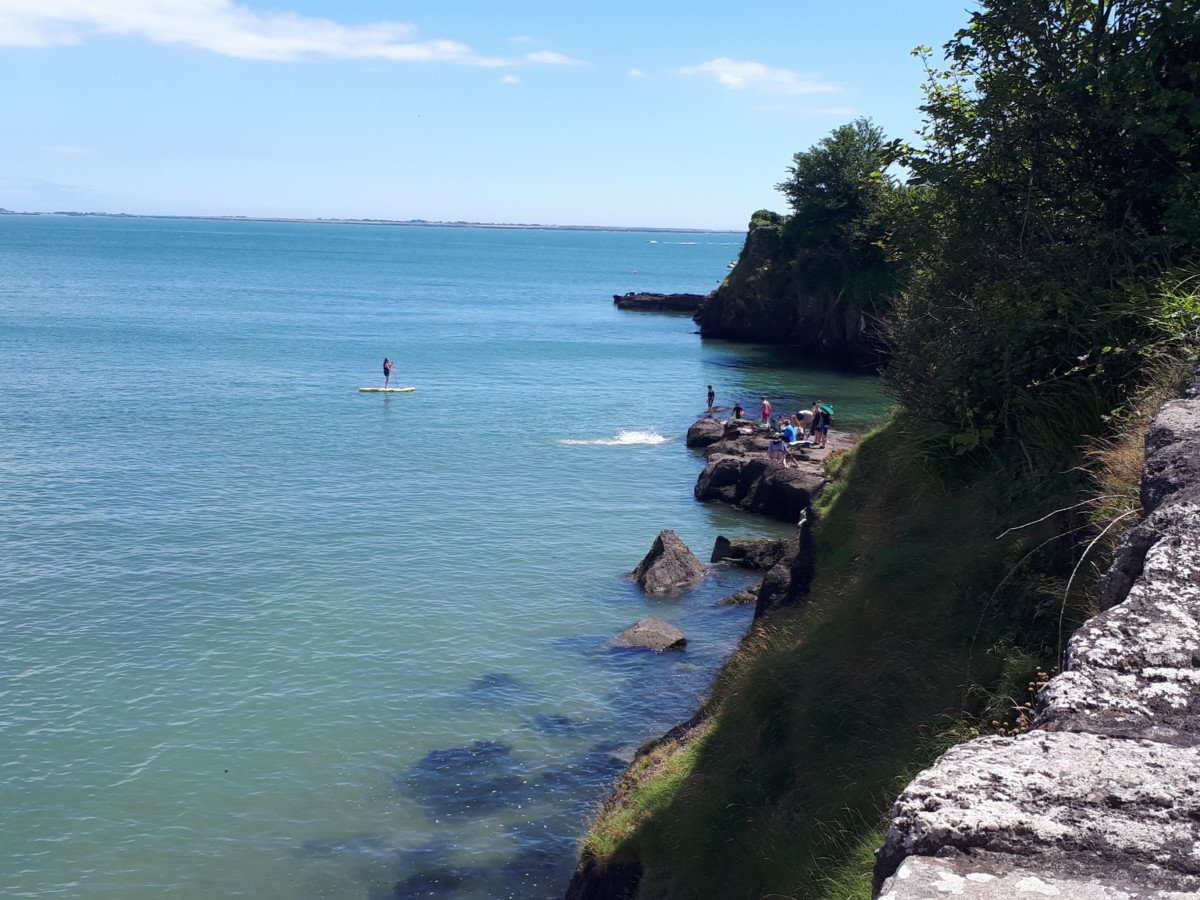
Dunmore East
Description
After a short ferry trip from Ballyhack, Co. Wexford, Section 3 of the route section starts in Passage East, Co. Waterford, a charming fishing village set in the stunning surrounds of Waterford Harbour. No doubt you will catch a glimpse of some of the famous wild goats on the hill before your journey here in Co. Waterford begins in earnest.
Dunmore East is a perfect stopping point some 12kms into your journey. Here you can fuel up in some of the village’s fine café’s or restaurants. There are plenty to choose from. You might fancy dipping your toe in the Atlantic Ocean at this point. Alternatively, if you are the adventurous type, why not visit Dunmore Adventures or go for a stroll along Dunmore East Coastal Walk or Dunmore East Wood Walks: https://visitwaterford.com/trails/detail/dunmore-east-walks/
As you venture further along the coastline you can take a rest at the numerous coves and inlets such as Portally Cove, Rathmoylan Cove or Ballymacaw Cove. Your next town is the well known resort town of Tramore. Tramore is a beautiful coastal town only 13km (8 miles) south of Waterford City, where land and sea meet to create an impressive 5km sandy beach ideal for walking, swimming, surfing, kite surfing or simply enjoying a coffee with a sea view.
Tramore has a complete range of facilities for the holiday maker, from top class accommodation and a great selection of cafe’s and restaurants, to leisure activities such as surfing, fishing, horse riding, golf and an Amusement Park for all ages.
Famous for its 5km of golden, sandy beach surrounded by the Atlantic Ocean, the panorama of Tramore Bay is truly magnificent. It blends natural beauty with a lovely traditional seaside town feel.
Tramore Beach is very popular with families with the long, rolling waves attracting swimmers and of course, surfers. Surf lessons and equipment are available to hire locally, sea kayaking, kite surfing and paddle boarding can also be enjoyed in the area.
Tramore beach is also popular for beach angling. The estuary flowing into the back strand has produced a number of specimen flounder and bass in recent years. https://visitwaterford.com/category/explore/tramore/
Your final stop on this EuroVelo 1 section is Waterford City. Founded in 914 AD by Vikings from Norway, Waterford City is over 1100 years old making it Ireland’s oldest City. In 914,the great Viking adventurer and pirate, Regnall, a grandson of Ivor the Boneless, established a base here and built a Longphort or ships haven, which would in time become a modern city. In 918, Regnall took a fleet of ships and left Waterford sailing for York and he became the first Norse ruler of Ruler of that City and held the title ‘King of Waterford and York’. The name Waterford is derived from its Viking name Vadrarjfordr which has two possible meanings; ‘haven from the windswept sea’ or ‘fjord’ of the rams’. The City was captured by the Anglo Normans in 1170 and the Vikings were expelled bringing a dramatic change. Within a few years of being captured, Waterford was escalated to the status of Royal City which owed allegiance to the Anglo Norman King of England, Henry II.
Today, Waterford is a vibrant and picturesque city that has managed to carefully maintain its important heritage, while also having a lively and modern shopping area, filled with cafes, award winning restaurants and an excellent mix of traditional, local and contemporary pubs. The city is also home to two theatres, the Theatre Royal and Garter Lane Arts Centre, as well as several art galleries, craft studios and boutique shops. In 2015, Waterford City was awarded a ‘Purple Flag’ – similar to the Blue Flag for beaches – the Purple Flag is granted to urban areas which reach excellence in their evening and night time economies. Waterford City is the first urban location in the South East to achieve the Purple Flag standard.
Lonely Planet recommends a visit to Waterford City, saying ‘Waterford is Ireland’s oldest city and celebrated its 1100th anniversary in 2014. A busy port, it lies on the tidal reach of the River Suir, 16km from the coast. Some parts of the city still feel almost medieval, with narrow alleyways leading off larger streets; an ongoing revitalisation campaign is polishing up one block after another. New and existing museums tell the story of Ireland’s Middle Ages better than any other city in the country’.
Waterford is the capital city of the South East region and is within easy reach of Kilkenny, New Ross, Wexford, Tipperary and Cork.
Comments: Section 3